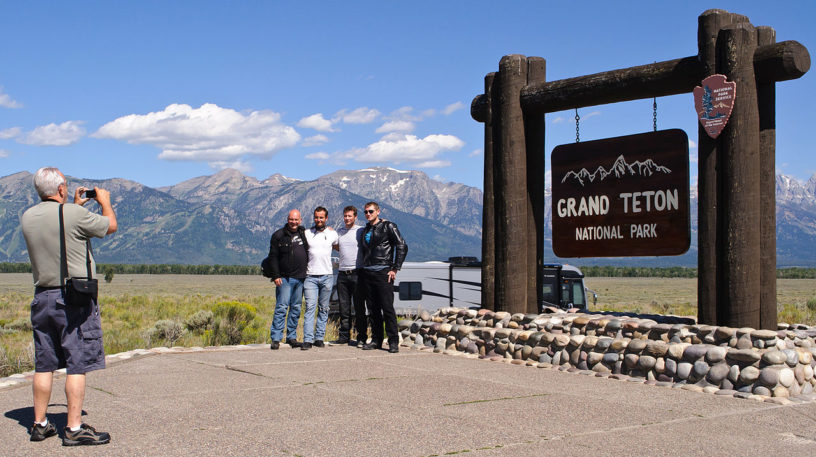Top 10 interesting facts about the Grand Teton National Park, Wyoming.
The Grand Teton National Park is an American Park, governed by the National Park Service. It was founded in the year 1929 by the U.S Congress with aim of protecting the Teton Range and many lakes at the base of the mountains. It is Northwest of the U.S state of Wyoming, covering almost all the great mountain peaks of the 64Km Teton Mountain Range and the Jackson Hole valley. It is 470Km from salty lake city and 890Km from Denver, Colorado. The 310,000 acres Grand Teton National Park is one of the 10 most visited National Parks in the U.S. Enjoy the below top 10 interesting facts about the Grand Teton National Park, Wyoming.
1. The Grand Teton National Park is named after the tallest mountain in the Range

The Three Tetons from the west-By Daniel Mayer-Wikimedia commons
The Grand Teton National Park acquired its name after the tallest mountain (4,000M) called ‘Grand Teton’. The mountain is also believed to have been named after 19th -century French trappers- Les Trois tétons meaning ‘the three teats’ which was later translated and shorted to ‘Tetons’.
2. Grand Teton National Park was first visited by American Indians
Despite the claim that no one knows the first men to climb Grand Teton, the American Indians, ‘Nomadic Paleo-Indians’ traveled around the range and climbed several summits before Europeans visited the area. During summer seasons do the hunting, fishing, and gathering of wild fruits. They moved out of the valley when the winter season approached to look for warmer places.
They left behind tipi rings, fire pits, and stone and fishing tools along the shores of Jackson Lake. One of the tools discovered is associated with the Clovis culture, of the cultural period dating back around 11,500 years. This indicates that they entered the Teton region for approximately 1,100 decades.
3. Grand Teton National Park is a source of wealth to ‘mountain men’
Grand Teton National Park attracted many beaver fur trappers, known as ‘Mountain men’ between the years 1810 and 1840 who made top hats that were fashionable at that time.
John Colter, a Euro-American and a member of the Lewis and Clark “Corps of Discovery” expedition entered the Jackson Hall Valley around the early 19th century, and later joined two beaver fur trappers; David Edward (Davey) Jackson and William Sublette. The Jackson Hole Valley became their base of operation, thus William Sublette dubbed it “Davey Jackson’s Hole” in 1829. This is how the Valley acquired its name ‘Jackson Hole Valley’. Due to the over trapping of beaver fur and fur hats changing to silk hats, the ‘mountain men’ era ended in 1840.
4. Grand Teton National Park is home to dude ranchers
In the year 1862, the U.S Congress passed ‘The 1862 homestead Act’, encouraging west settlement in the Teton region. In 1884, many white settlers established homesteads. The general condition of the place was not favorable for agriculture due to long cold winters, dry summers, and the rocky and sandy land making life difficult for the locals.
The rich Easterners toured the west to learn about horse-riding and cattle ranching. The visitors were welcomed and they paid generously for goods and services rendered to them; food, accommodation, and outdoor activity services. Realizing the huge amounts of profit and how easy it was to manage, the residents were impressed, and they embraced the dude ranching which became progressively successful in the early 1920s.
5. Grand Teton National Park took a long time to be established
Conservationists wanted to extend the boundaries of the Yellowstone National Park, to cover parts of the Teton Range. The dwellers of Jackson Hole opposed the idea as they wanted to preserve the mountain valley as a ‘Museum of the hoof’. They proposed the establishment of another National Park that would include the Teton Range and the six lakes in the mountain valley. They held a meeting in 1923 at Maud Noble’s cabin, to table the issue of conservation and preservation of this mountain valley.
Eventually, through the signing of the executive order establishment of the 96,000-acre Grand Teton National Park, by President Calvin Coolidge, Congress established the Grand Teton National Park on 26th February 1929.
6. Grand Teton National Park’s boundary is expanded.
John D. Rockefeller, Jr. visited the Teton Range In 1926 and was pleased with the beauty of the mountain region. He gradually procured a private 35,000 acres of land, throughout the valley, through the Snake River Land Company, with intention of donating it to the American federal government as part of the Grand Teton National Park. This was opposed by the residents, citing loss of local tax revenue.
Through a Congress hearing, the Jackson Hole Valley, which remained under John D. Rockefeller, Jr. since 1943 was donated to the government as part of the Grand Teton National Park. Franklin D. Roosevelt also pronounced additional land in the valley in 1943 to be the ‘Jackson Hole National Monument’.
In 1950, Congress merged the original 96,000 acres of Grand Teton National Park, the Jackson Hole national monument, and the John D. Rockefeller’s 35,000-acre land to form the current 310,000 acres of Grand Teton National Park.
7. Grand Teton National Park needed Visitors’ accommodation
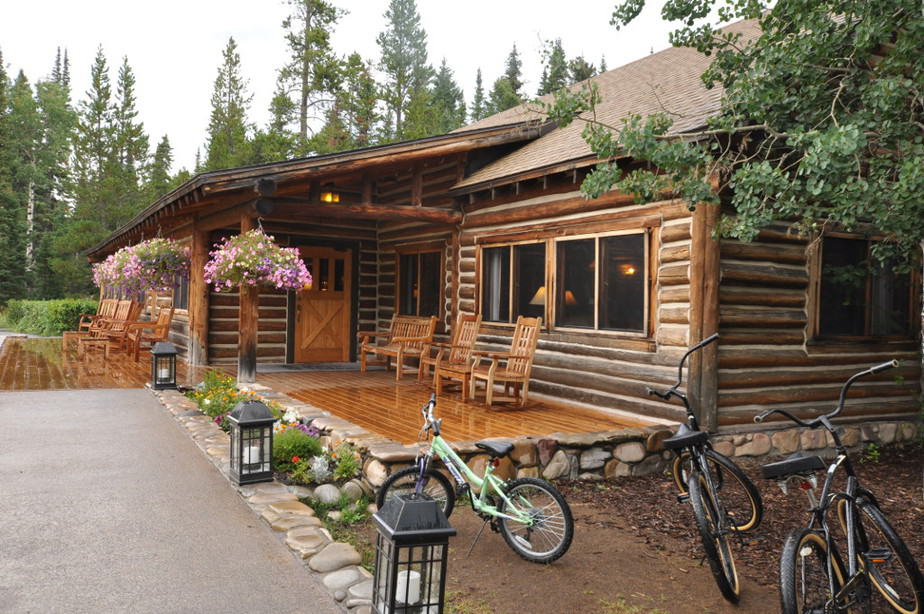
Jenny Lake Lodge, Grand Teton National Park.-By Magicpiano- Wikimedia commons
Grand Teton National Park tourism increased and John D. Rockefeller, Jr felt the need to accommodate tourists. He built the Jackson Lake Lodge, near Jackson Lake, the largest facility with 385 rooms, conference halls, a canteen, and a restaurant, the Jenny Lake Lodge, with cabins and a restaurant, and Signal Mountain Lodge with cabins, marinas, gas station, and a restaurant.
Other accommodation facilities at the Grand Teton National Park are; Colter Bay Village, with cabins, restaurant, grocery store, laundry, and a marina; American Alpine club, with hostel dormitory design preserved for mountaineers; and Triangle X and Dorna’s which are private inholding.
8. The Grand Teton National Park is a recreation ground
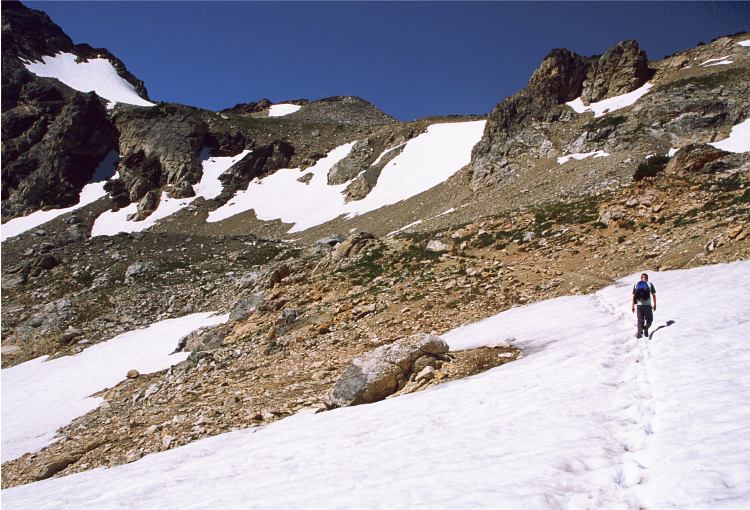
A hiker crosses a snowfield en route to Paintbrush Divide, Grand Teton National Park-By Phil Armitage-Wikimedia commons
The Grand Teton National Park offers a range of both winter and summer outdoor activities. They range from Mountaineering, fishing, Boating & floating, Hiking, Biking, cross-country skiing & snowshoeing, wildlife viewing, scenic drives, and wildlife viewing.
There are has five front-country campgrounds accessible to vehicles; Colter Bay & Gros Ventre, being the biggest each with 350 campsites, Lizard Creek, Signal Mountain, and Small Jenny Lake with 60, 86, and 49 sites respectively. Backcountry campsites are those that are only accessible on foot or by horseback. Range-led programs about the Park are offered at the Visitors center too.
9. The Grand Teton National Park has several species of wildlife
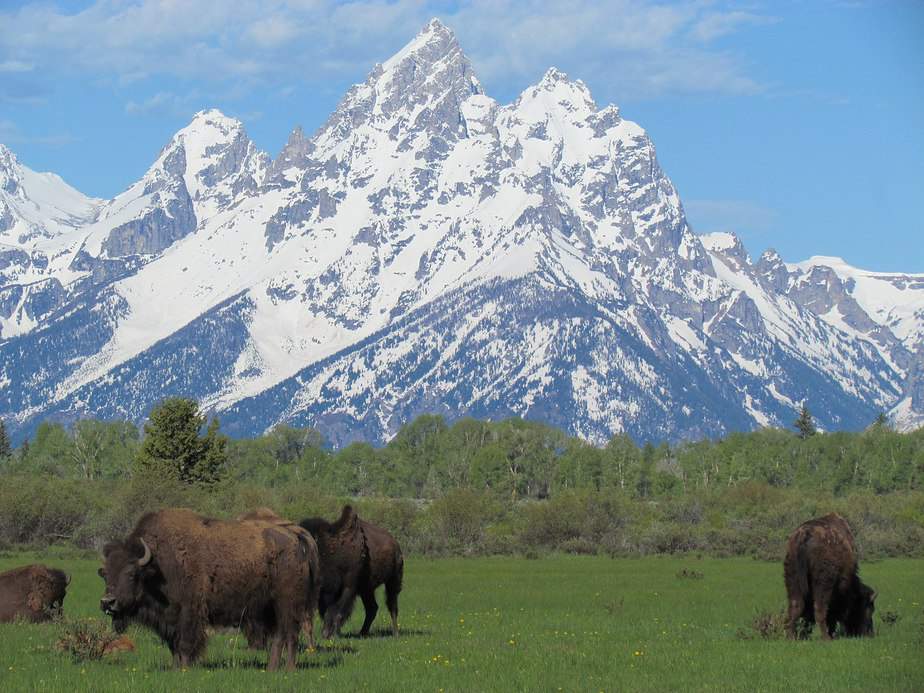
Bison grazing in front of the Grand Tetons-By Jkinsocal-Wikimedia commons
The Grand Teton National Park has documented several wildlife species; 61 mammal species,17 carnivore species, 4 reptile species,6 amphibian species, and 6 Bat species. common wildlife includes; Insect species average of 10,000, birds are over 300 species, including 30 waterfowl species like the trumpeter swan, 14 owl species like the great horned owl, and 12 woodpecker species like Bald & golden eagles and red-tailed hawk.
Others; Elk, Grizzly bear, black bear, Coyotes, Bison, Pronghorn, moose, wolves, and Bighorn sheep. Rodents species include; Yellow marmot, Least chipmunk, Muskrat, beaver, Uinta ground squirrel, Snowshoe hare, and porcupine, and fish species like the Snake River fine-spotted cutthroat trout
10. Grand Teton National Park expands Visitors services
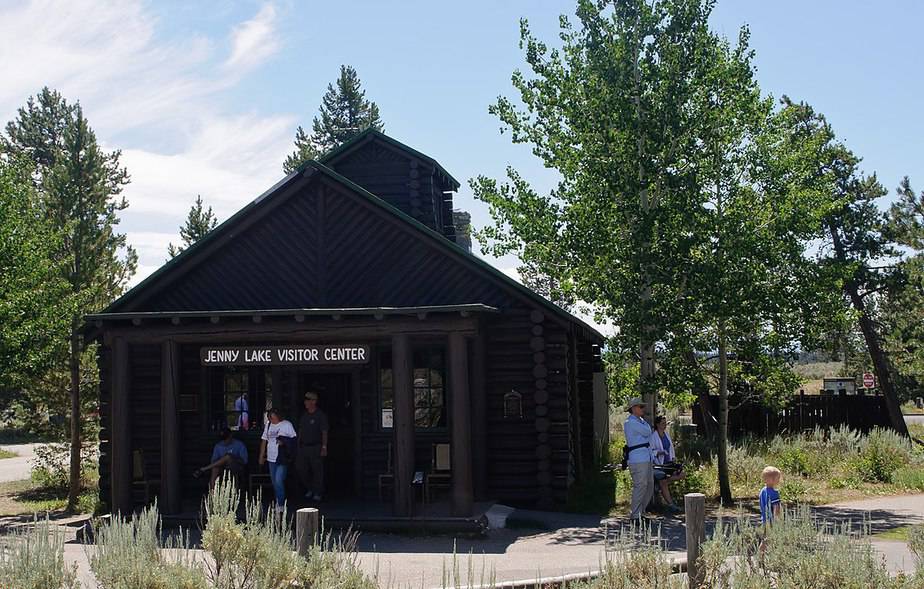
This log cabin was Grand Teton National Park’s original visitor center, and the Jenny Lake area was the first section of the park to be developed with tourist infrastructure.-By InSapphoWeTrust-Wikimedia commons
Grand Teton National Park got inspired by the increased tourism, prompting the expansion of visitors’ services. Several Visitor centers were established. Colter Bay visitors Center, near Jackson Lake, was built in 1956, and later became the Colter Bay visitors center & Indian Art Museum, as it housed the David T. Vernon Indian Arts Exhibit from1972.
The Craig Thomas Discovery and Visitor Center at Moose, Wyoming, was named after U.S Senator Craig Thomas. It was designed by architect, Bohlin Cywinski Jackson to replace an old visitors center. Other Visitors Centers are; the Jenny Lake Visitor Center, within the Jenny Lake Ranger Station Historic District, which was an art studio of photographer Harrison Crandall in the 1920s, and the Laurence S. Rockefeller Preserve Center located at Phelps Lake. It was part of the JY Ranch, the first dude ranch in Jackson Hole
Planning a trip to Paris ? Get ready !
These are Amazon’s best-selling travel products that you may need for coming to Paris.
Bookstore
- The best travel book : Rick Steves – Paris 2023 – Learn more here
- Fodor’s Paris 2024 – Learn more here
Travel Gear
- Venture Pal Lightweight Backpack – Learn more here
- Samsonite Winfield 2 28″ Luggage – Learn more here
- Swig Savvy’s Stainless Steel Insulated Water Bottle – Learn more here
Check Amazon’s best-seller list for the most popular travel accessories. We sometimes read this list just to find out what new travel products people are buying.

